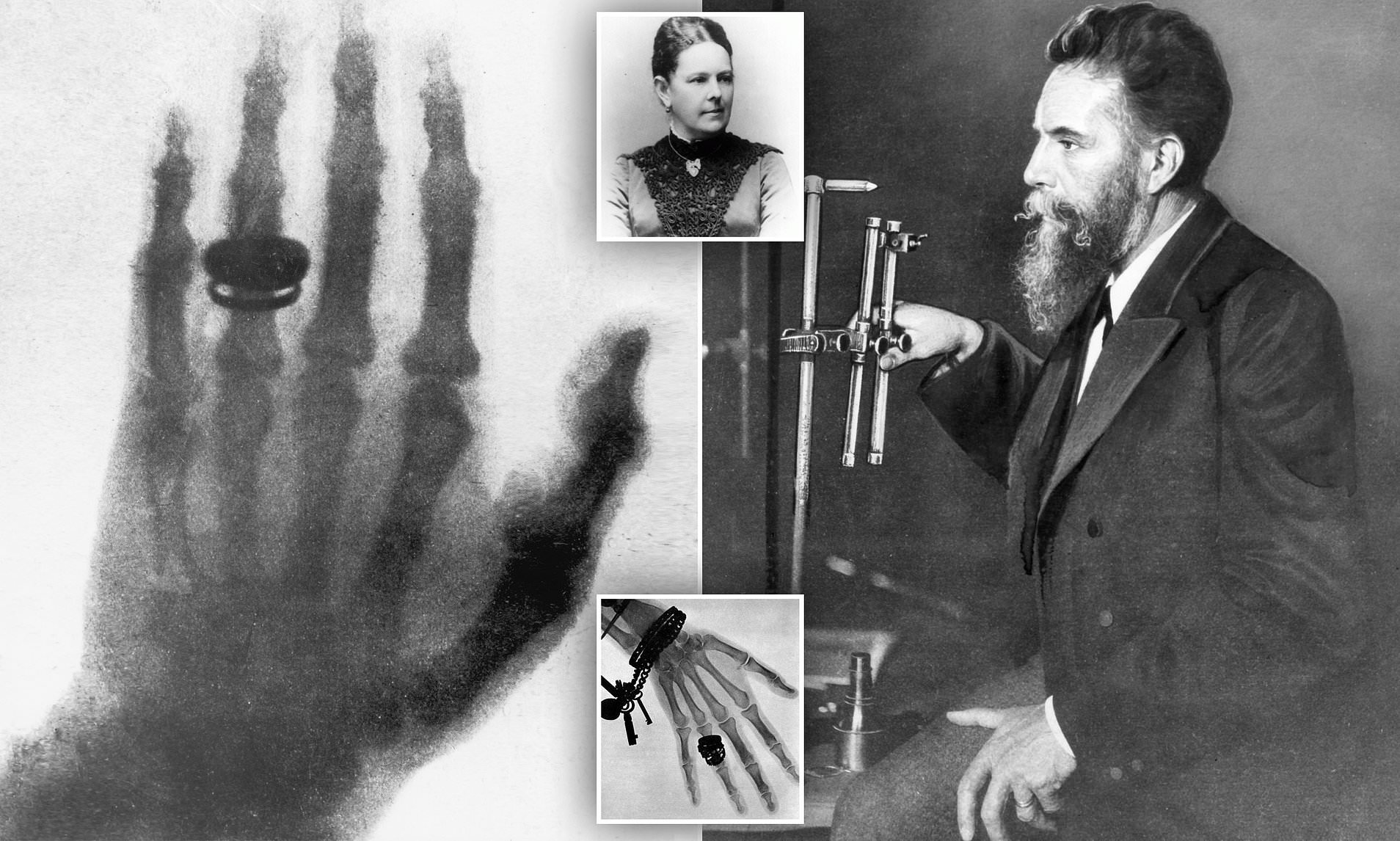
1895 – Wilhelm Conrad Roentgen’s Discovery Of X-rays
On November 8, 1895, the veil of the material world was pierced by Wilhelm Conrad Röntgen, an event that would irreversibly change the course of scientific and medical history. Röntgen, a German physicist, was conducting experiments in his Würzburg lab with cathode rays, when he stumbled upon a phenomenon that would come to be known as X-rays. This serendipitous discovery was not the product of a momentary glance but the result of meticulous investigation and a curious mind attuned to the wonders of the physical world.
Röntgen was examining the path of electrical currents passing through a glass vacuum tube, a type of cathode-ray tube. Although the tube was enclosed in black cardboard, which obstructed visible light, Röntgen noticed that a fluorescent screen placed a short distance away began to glow. Intrigued by this unexpected fluorescence, Röntgen surmised that the tube was emitting some form of invisible rays that could penetrate the opaque covering.
In the weeks that followed, Röntgen dedicated himself to understanding these mysterious rays. He found that they could pass through various objects, casting shadows of solid materials onto photographic plates. What truly underscored the significance of his discovery was the revelation that these rays could penetrate human tissue, offering an unprecedented glimpse into the living body without the need for surgical intervention.
Röntgen’s discovery was groundbreaking. For the first time, physicians had a non-invasive method to observe the internal condition of their patients. On December 22, 1895, he took the first medical X-ray: an image of his wife’s hand, which clearly showed her wedding ring and bones. This image astounded the public and the scientific community, revolutionizing the field of diagnostic medicine.
Recognizing the importance of his discovery, Röntgen refused to patent his find, opting instead to make it freely available for the benefit of humanity. His selflessness allowed for rapid advancements in the field. Barely a year after his discovery, X-rays were being used in a medical setting to locate bullet fragments in a patient’s body.
In 1901, Röntgen was honored with the first Nobel Prize in Physics. The citation highlighted the extraordinary services he provided by discovering the remarkable X-rays. His legacy extends far beyond the Nobel accolade; he provided medicine with one of its most powerful diagnostic tools.
The X-ray remains an essential diagnostic instrument over a century later, its applications having multiplied across various fields, from medical imaging to security to industrial inspection. Röntgen’s discovery on that November day in 1895 stands as a testament to human curiosity and the power of serendipity in scientific discovery. It opened a new realm of understanding, allowing us to see the unseen, forever altering the landscape of scientific inquiry and medical practice.



